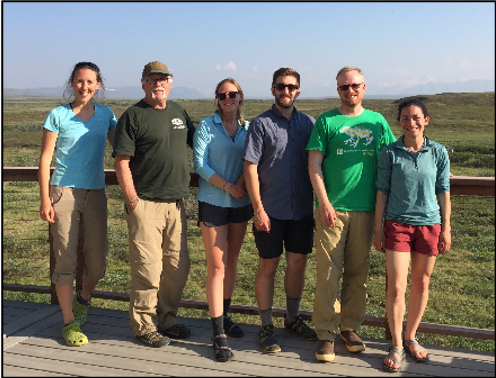
The activities are as follows:
- Teacher Guide
- Student activity, Graph Type A, Level 3
- Student activity, Graph Type B, Level 3
- Student activity, Graph Type C, Level 3
- PowerPoint of images
- Scientist Profile on Project Biodiversify
- Grading Rubric
You rely on the nutrients from the foods you eat to grow and thrive. Other organisms, like microbes, do as well! Aquatic algae, a type of microbe that live in the water, need to take in nutrients from their surroundings for growth. Two important nutrients for algal growth are nitrogen (N) and phosphorous (P).
Sometimes the environment does not have all the nutrients that aquatic algae need to grow. When one nutrient is less available compared to others, algae can become nutrient limited. Research on nutrient limitation started with Justus Liebig, a 19th century scientist who proposed the “law of the minimum.” The law states that the nutrient available in the lowest amount relative to demand will limit overall growth and production. This means that growth is not controlled by all the nutrients, but by the scarcest one (the “limiting factor”). When more than one nutrient limits growth, algae are considered co-limited. This just means that a combination of two nutrients are needed for algae to grow. Knowing what nutrients are limiting growth helps scientists understand how an ecosystem is working.
From other research we know that many ecosystems, including those in the Alaskan Arctic, are phosphorus-limited. Scientists figured this out because they found if they added phosphorus, then algae growth increased. However, climate change could change this. As the Arctic warms, ecosystems on land might start to release nutrients in higher amounts or new proportions into the water. These extra nutrients will likely cause increases in algae growth in streams and ponds, which in turn could change food webs and nutrient cycling. It is therefore important to understand which nutrients are currently limiting algae growth before climate change changes things even more. This starts with tests to see how Arctic algae grow in response to changes in N, P, and N and P in the water.
A team of scientists got to work on this question! Arial, Jay, Frances, Alex, Breck, and Abby are all interested in understanding how climate change may alter nutrient limitations in Arctic streams. Each team member has a unique role in the larger research project. For example, undergraduate researcher Abby spent her 2019 summer at Toolik Field Station in Northern Alaska as part of a research opportunity. She explored nutrient limitation in one particular lake, called Lake I8.
Abby used small cups that placed into the streams that fed into Lake I8. These cups were filled with agar gel, a material used in labs to grow microbes. Each cup contained different nutrient treatments. Abby used four different treatments in her cups: (1) a control (agar only), (2) agar + nitrogen, (3) agar + phosphorus, and (4) agar + nitrogen + phosphorus. On the top of each cup, she placed a glass disk to provide a surface for the algae to grow.

Abby put 5 replicate cups for each treatment at both the Inlet and Outlet streams on the I8 Lake. She left them underwater for 4 weeks. She brought the cups back to the lab to measure the algae that grew on each glass disk. Abby measured how much algae grew on each disk by measuring the amount of Chlorophyll a, the green pigment that helps plants photosynthesize. The more pigment, the more the algae is growing. Abby compared the data from the control to each of the other treatments. When there is more growth in a treatment compared to the control, that means a particular nutrient was limiting at that location. Abby expected that the streams would be limited by the amount of phosphorus, but not the amount of nitrogen. She predicted algae would grow more when they are given additional phosphorus compared to the control treatment.
Featured scientists: Abigail Rec from Gettysburg College; Frances Iannucci, Alex Medvedeff, and Breck Bowden from University of Vermont; Arial Shogren and Jay Zarnetske from Michigan State University
